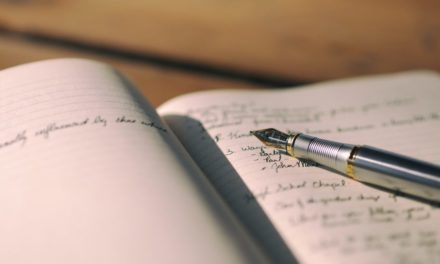New Zealand romance writer, Frances Housden, wrote these notes to help future romance writers. She has always been a voracious reader, but she never thought of being a writer until a teacher gave her the encouragement she needed to put pen to paper.
Her first creative writing teacher was Joan Rosier Jones. Frances made the final three of the 1998 Clendon Award and won the award in 1999, which led to the sale of her first book for Silhouette, The Man For Maggie. She has achieved her success by hard work and determination. Find out more about Frances Housden on her website: www.franceshousden.com.
Character building for the romance writer | Frances Housden
Probably you will have experienced moments when a character starts whispering in your ear, desperate to be heard, but at the same time you are left with the task of discovering who they are and just what their story is. Personally, I prefer starting off with a situation gleaned either from a newspaper or plucked out of cyberspace where a lot of ideas seem to linger just waiting for me to come along. Once I have an idea of the situation, I can then begin the process of making my hero and heroine fit the scenario.
For me the initial situation plus character leads to plot. So when I start pulling it together all I need is the beginning and an idea of how I want it to end. The ever-present threat of sagging middles is only a problem if my characters haven’t been constructed properly.
I look on the whole plot as a landscape with its fair share of mountains and valleys. But unlike a painting, a boos requires forward motion and each summit the hero or heroine conquers should either act as a plot-point or show character growth. To make certain our plots are character driven – which is something editors are very fond of – it is necessary to know as much as possible about all of our characters, including the secondary ones. This can be the difference between protagonists who are dull and three-dimensional ones who leap off the page. If like me you write romantic mystery/suspense this applies particularly to the bad guy.
Villains don’t exist in a vacuum, so don’t make them evil simply for the sake of it. Give them goals and motivations which will become part of the mystery sub-plot. But remember evil protagonists come in many guises and not only in a suspense thriller. That bad guy might just turn out to be a gal.
Many writers begin by interviewing their subjects, but I don’t care what my characters eat for breakfast or if green is their favourite colour. These things aren’t set in stone and change through time, but I do need to know what significant happenings in their past brought them to this place in their lives and helped shape their inherent beliefs. I want to know what will make them happy and what they fear most. I want to know if they had an alcoholic mother or father, or were raped at the age of fifteen, because nothing, but nothing, can change that. But it does create their character and the reader is able to empathise with their rigid intolerance towards alcohol or fear of physical relationships, which can only be overcome through character growth.
So now we have our situation? Start by asking what might have happened to the hero/heroine in the past that would drive them to react in the way we require and begin building the character to fit the situation. Even with an archetypal bad boy or seductress, it is still necessary to know what made them that way. What helped shape them?
For example – a genius requires a stupid man for a mate. In Susan ‘Nobody’s Baby But Mine’, by Elizabeth Philips the heroine is a single woman whose biological clock is running down fast, and along with it her chances of conceiving a child. But the men in her circle are far too intelligent as she equates her extremely high IQ with the inadequacies of her childhood. This is the reasoning behind her setting her sights on a dumb jock, a football player, and her hilarious attempts to induce him to have sex with her, on the premise that their two intelligence quotients will balance each other out, resulting in a child who is just average.
Complications set in when she discovers the football player she thought dumb, isn’t. And this highly intelligent sportsman refuses to be politely dismissed from his child’s life, resulting in a forced marriage scenario. This scenario doesn’t sit easily with the hero either. He could have any beautiful woman he wants; instead he has ended up married to an older, nerdy genius who bemoans the fact that her actions have ruined her child’s life. This is a situation with loads of conflict and the way the writer resolves it, achieving the traditional happy ending, simply could not happen to characters with different back-stories – because character leads to plot.
In any story, especially a mystery/suspense, it is best to give the hero/heroine a large stake in the outcome by having it evolve from something in their past. This way the characters are the story, not simply moving through it.
In ‘The Man For Maggie’ I wanted to set the book in a vineyard (as I live surrounded by them, I’d already done the research) and I decided on a psychic heroine. It would have been easy if the dreams she had, predicting murders, led to her simply warning the police. What I had to do was find something in her past that would make telling the police a last resort. To give her an even bigger stake in solving the mystery I decided that her precognisant dreams were only ever about people she knew. But in the latest dreams of bizarre murders she couldn’t see the killer and did not know any of the victims.
I gave the hero problems with shedding his police persona. Simply going with the usual cops-don’t-trust-psychics scenario would not have done him justice, so I gave him an understandable excuse for his mistrust. The villain was not left out either. I discussed his motivation with a psychologist who happened to be sitting next to me on a plane between Los Angeles and Washington DC, and she confirmed that my reasoning worked well, which was a relief.
To tie everything up nicely, the heroine had known the villain in her past, and the lead up to the mystery actually began in her childhood. So again the plot could not have worked with two other people. Again, character leads to plot. By starting with a situation in the present I was able to go into the past and build the characters I wanted using that knowledge to make them three dimensional people who drove their own stories. They were not simply cardboard cutouts to be pushed around to suit the plot.
You will also find that building characters this way leads to goal, motivation and conflict, producing solid reasons for the actions and reactions that go to the heart of characterisation. To complete their pictures we need to colour in physical appearance, speech and body language.
In ‘Exposure’ by Susan Anderson the hero has a large jagged scar on his face and a hook instead of a hand. These aspects of his appearance cannot simply be described then ignored most of the time, as we can with hair or eye colouring. It is something the hero cannot escape and contributes to his character. But even using a small thing like red hair which leads to the hero or heroine being teased at school can help add the extra depth we are looking for.
In dialogue be sure to give each character an individual voice and stay true to that voice even during introspection. Remember to take into account their levels of education. Insert a small phrase they might use frequently like, ‘Hell’s teeth’ or ‘Devil take it.’ This tells the reader who is speaking without the benefit of a dialogue tag.
Knowing your characters inside out also leads to sharper, snappier dialogue they can bounce off one another. When it comes to body language, a small habit that defines mood or inner tension adds to the whole character. But be sure it fits the gender. The hero slaps his fist against his palm when he is angry, or the heroine bites her bottom lip when she is nervous. Clichéd I know, but it works as a signal, because the reader will know the heroine is troubled about something.
One last piece of advice. Give your characters a flaw, then use it against them. As Suzanne Brockman says, it is easy to send a mountain climber to save a child stuck on a cliff face… but send a man with a fear of heights and it is a whole different story. If I have spent more time on the back-story than the peripherals it is because I believe characterisation comes from the total of your characters’ experiences.
The rest is simply icing on the cake or the top third of an iceberg. It is the bottom two-thirds that can’t be seen at a glance that will turn your characters into real people.
To sum up: the initial situation plus back‑story leads to character, which leads to plot.
By Frances Housden. Reproduced for educational purposes.
How to WRITE YOUR FIRST ROMANCE NOVEL?
Do you enjoy a long distance love story, or maybe something like fifty shades? Do you want to write love stories and romantic novels? Learn how to express your personal style and become an accomplished author!










